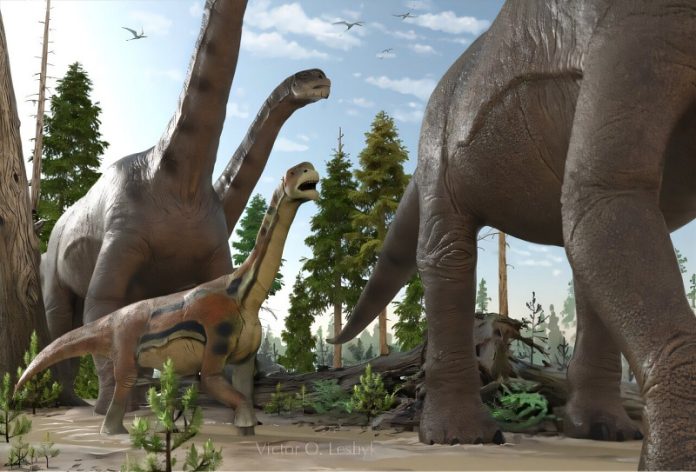
The extinction of giant dinosaurs millions of years ago may have played a big role in shaping the environment that led to the evolution of fruit, and eventually, our own fruit-eating primate ancestors.
For years, scientists have believed that when dinosaurs disappeared, forests changed, allowing fruit to develop.
Now, a new study by researchers at Northern Arizona University has found solid evidence to support this idea.
Sauropods, the largest land animals to ever live, shaped their environment by knocking down trees and eating vast amounts of plants.
When they went extinct, forests grew back much thicker, creating a dark and dense forest floor.
This led to the evolution of bigger seeds and fruit, which later became food for many animals—including the primates that would become our ancestors.
More than 66 million years ago, when dinosaurs still roamed the Earth, seeds were small, and fruit was rare. But after their extinction, trees had to compete for sunlight in the newly dense forests. Trees that grew from larger seeds had an advantage, as they could sprout stronger and reach sunlight faster than their neighbors.
At the same time, trees that produced sweet and tasty fruit were more likely to have their seeds spread by animals. This helped plants reproduce and thrive, leading to the explosion of fruit-bearing trees that we see today.
Until now, there wasn’t enough evidence to prove this idea. The research team created a computer model to test how seed and fruit size changed over time. Their model closely matched the real fossil record, showing that seed size increased after dinosaur extinction.
The scientists found something surprising when they kept running their model. About 35 million years ago, seed sizes started shrinking again. The reason? New large animals had evolved, playing a similar role to dinosaurs by shaping their environment and thinning out the forests.
“Our model showed that once large land animals returned, they opened up the forests enough for more sunlight to reach the ground. At that point, smaller seeds became just as successful as larger ones,” said study leader Christopher Doughty.
Another big change happened about 50,000 years ago when prehistoric mammals like mammoths went extinct. Without these animals to clear space in forests, the understory darkened again, and the cycle of larger seeds restarted.
Humans, the descendants of early fruit-eating primates, are now the ones shaping forests. Activities like logging and farming impact how much sunlight reaches the forest floor, influencing seed and fruit size just like dinosaurs once did.
If humans stop shaping forests and no other large animals take their place, forests could darken again, restarting the process that favors larger seeds and fruit.
“Next time you eat a piece of fruit, think about how the extinction of dinosaurs set off a chain of events that eventually led to you enjoying that snack,” said researcher Benjamin Wiebe.
This study helps us better understand how the natural world is shaped over time—and how even long-extinct creatures like dinosaurs continue to impact life today.
Source: Northern Arizona University.



